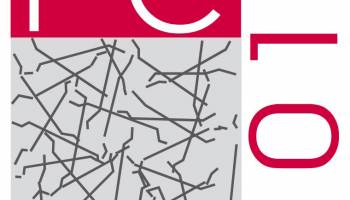The standard test methods for fibre reinforced concrete (FRC) are the 3 or 4 points bending beam tests with displacement control measuring the force, middle point deflection and/or CMOD. The fibres will take effect after reaching the flexural strength, e.g. after crack as residual post crack stress. This residual stress is measured until certain deflection or crack opening defined in the guidelines. According to the definition of the FRC the fibres are located in the concrete randomly and uniformly in all direction. This uniformity could be presumed at a sufficiently large representative size depending on the fibre and section size. This representative size could be reached by increasing the number of the beams or the area of the section.
At fibre reinforced shotcrete (FRS) round or square panel test is used where this representative size is relatively larger compared to the element volume. Disadvantage of this is the uncontrolled crack propagation, thus measuring the CMOD isn’t possible.
In this article the possibility of decreasing of dispersion is researched with simple method at synthetic fibre reinforced beams.
#Anyagvizsgálóklapja #FRC #evaluation



